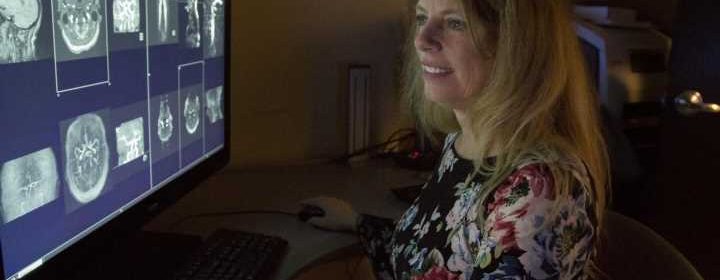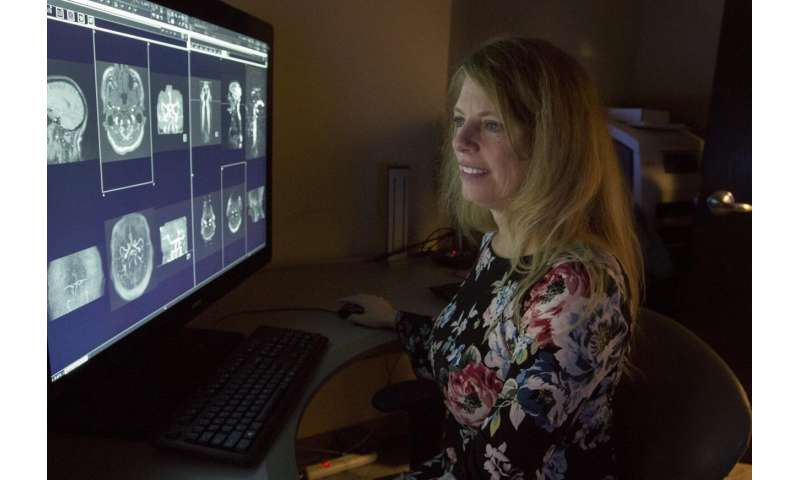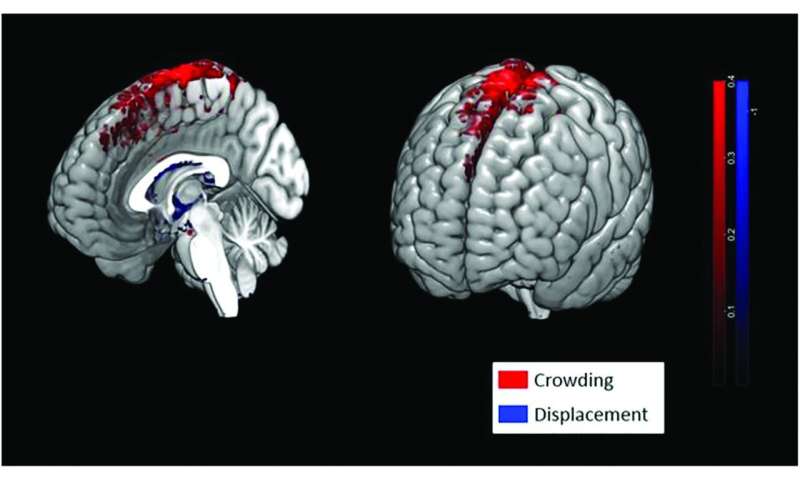Study underscores changes in brain structure, function in long-duration space missions

A new study demonstrates for the first time that changes in cognitive performance correlate with changes in brain structure in NASA astronauts following spaceflight. How the human brain adapts in space or in a microgravity environment is the subject of continuing research by neuroradiologist Donna R. Roberts, M.D., Department of Radiology and Radiological Science at the Medical University of South Carolina. The American Journal of Neuroradiology published Roberts’ paper, “Prolonged Microgravity Affects Human Brain Structure and Function,” online in October.
Previously, Roberts’ research reported an upward shift of the brain, crowding of tissue at the top of the brain and enlargement of the ventricular system in astronauts following long-duration missions in space aboard the International Space Station (ISS).
In this study, Roberts and her colleagues reviewed brain magnetic resonance (MR) imaging scans of NASA astronauts and saw widespread structural changes in the brain, especially after extended spaceflight missions. They found that those structural changes correlated with changes in the astronauts’ motor skills and cognitive performance in postflight testing.
“This study looks at cognitive changes in the brains of astronauts,” said Roberts. “Not a lot is known about cognitive impairment in humans during spaceflight. Although this study evaluates a small subset of astronauts, it’s significantly larger than any previously published study of its kind involving astronauts or Russian cosmonauts.”
Roberts obtained data from the NASA Lifetime Surveillance of Astronaut Health (LSAH) program and compared the pre- and post-spaceflight brain MR imaging of 19 NASA astronauts—seven astronauts who completed short-duration flights aboard the Space Shuttle and 12 astronauts who underwent long duration missions aboard the ISS.
Then, she and her team evaluated the pre- and post-spaceflight cognitive tests results of the 12 long-duration astronauts and correlated that data with the brain structure imaging findings. The Spaceflight Cognitive Assessment Tool for Windows (WinSCAT) battery test is a screening tool developed by NASA to monitor astronauts and their neuro-cognitive status while in space and alert NASA flight surgeons to any accuracy or reaction time changes in an astronaut’s performance. WinSCAT tests working memory, computational skills, attention, visual tracking and spatial processing.
In addition, eight of the astronauts participated in a functional task test, a NASA-sponsored study to assess an astronaut’s performance of mission-critical tasks during spaceflight required after landing on a planetary surface like Mars. This physical coordination and strength assessment evaluates mission activities such as an astronaut opening a hatch, climbing a ladder, exiting a vehicle or walking a distance on a planetary surface.
The study team used several analytic methods to assess brain MR imaging change data and cognitive and motor function scores to determine any correlations. They compared brain structure changes with the astronaut’s age at the time of launch and flight duration.
Roberts and other human research scientists remain concerned about the lack of data about how the human brain adapts to microgravity. She continues to advocate for more research in these areas, noting in the paper that her study results could have major health significance that should be considered in spaceflight policy and planning.
According to Roberts, basic MR imaging scans are part of the medical operations protocol for NASA astronauts but no long-term imaging follow-up is part of that protocol. Roberts is among a research cadre who would prefer NASA use advanced neuroimaging techniques that can provide sharper, enhanced views of the brain to understand these changes and their effects on long-duration missions planned for the moon, Mars and beyond.
“The long-term effects of these brain changes are unknown at this time because of the need for more detailed brain imaging of our astronauts. With that data we can begin to answer some important questions—Does the brain return to its pre-flight baseline? Are there any long-term consequences of the brain’s structural and performance changes in microgravity?” Roberts said.
Source: Read Full Article

